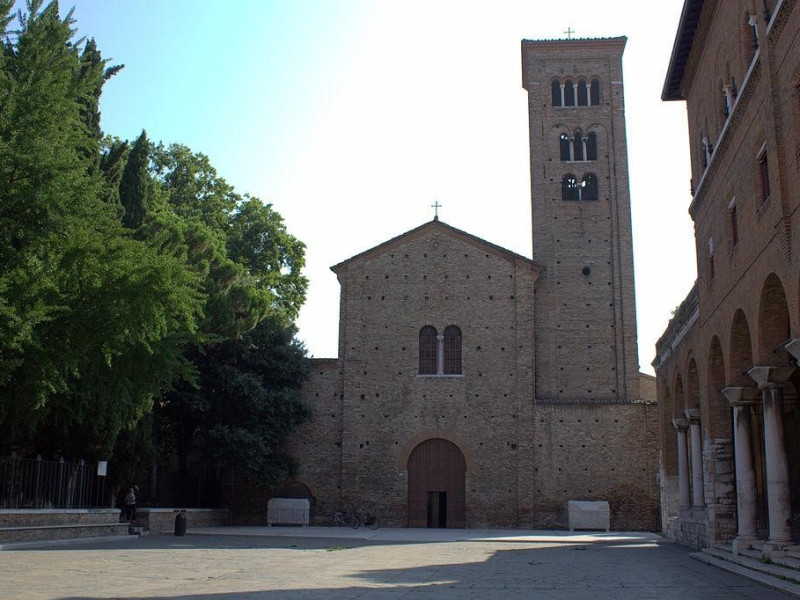Basilica di San Francesco
Saint Francis's Basilica stands in the place of an older church, built shortly after the 450 by the Bishop Neone. The building of the fifth century was demolished and replaced by a larger church, with high bell tower. The new Church passed to the Franciscan order in 1261; in 1321, there were celebrated the funeral of Dante Alighieri. Between the seventeenth and eighteenth centuries, the Basilica was repeatedly restored and enriched with decorations and Baroque altars. The most important was the restoration of 1793, by Peter Zumaglini. Between 1918 and 1921, ahead of the sixth centenary of Dante's death, the building was radically restored by removing all Baroque additions: the facade is salient, with facing brick. At the center is a simple portal with a round arch surmounted by a mullioned window. On both sides, there are two ancient sarcophagi in marble. The interior is divided into three naves by two series of arches supported by twelve columns on each side. Along the right aisle, there are three chapels: the third dates back to 1532 and has a dome frescoed by Andrea Barbiani and, on the altar, the painting of the "Madonna and Child with Saints" by Gaspare Sacchi. In the bottom of the nave is the semicircular apse, whose center is the main altar, made up of the sarcophagus of the Bishop Liberius III (early fifth century). Below the presbytery is the Crypt of the IX-X century, reached by a double flight of stairs, but not accessibiele. The Crypt has three naves covered with vaults supported by four columns with geometric capitals, and a mosaic floor.



